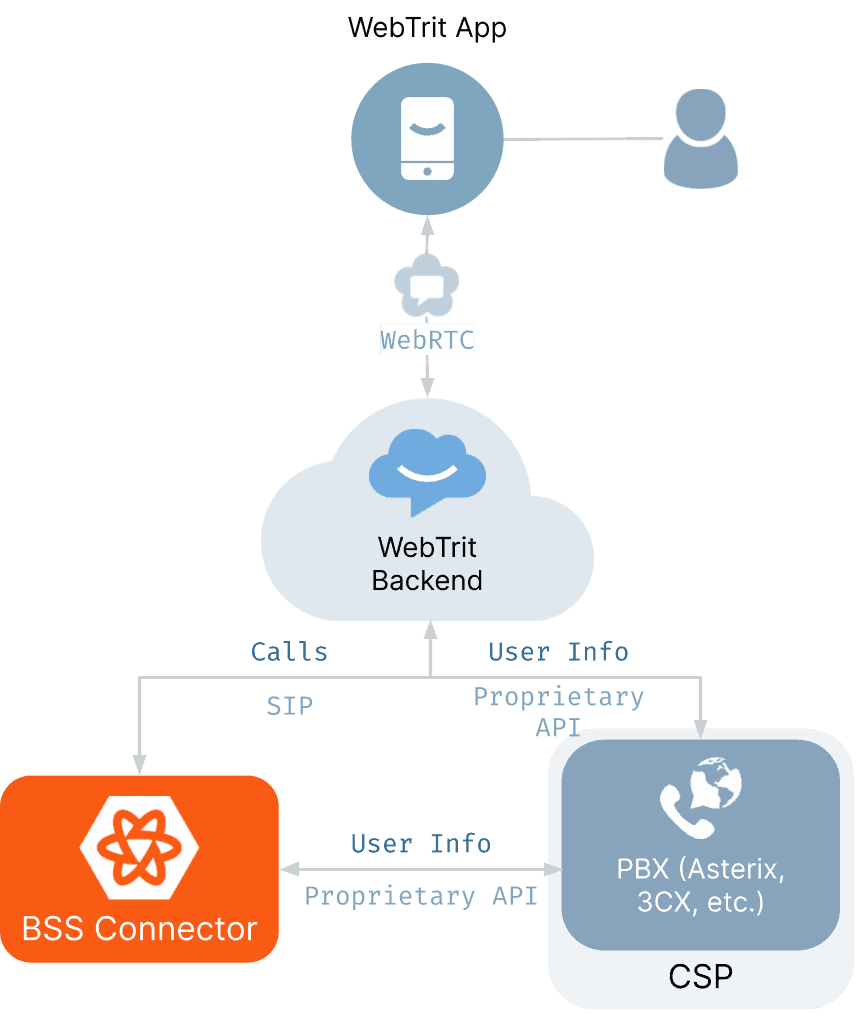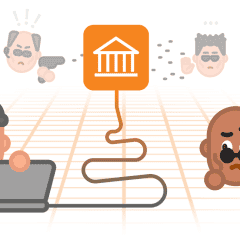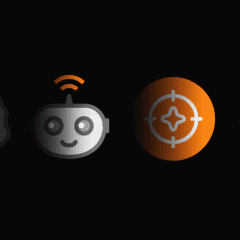When writing this story about softphone – specifically about PortaPhone alternatives – we asked ourselves why anyone would need another softphone app given the over 25 that already exist. Here’s one possible answer: in a world of great free advice on building a VoIP softphone, the two key differentiators of the best softphone (one that helps earn money vs. losing it) are:
- How easy it is for willing entrepreneurs to launch a business based on that softphone app, and
- The customization opportunities for the end users.
Sell Your Softphone (Or at Least Consider Monetization) Before You Make It
“During two decades at PortaOne, I’ve seen a similar softphone story time after time,” explains Andriy Zhylenko, our CEO. “A customer is charmed by a team of white-label VoIP or SIP softphone developers or a passionate project manager within the customer’s team. The customer then invests heavily in building their softphone app. In the recent decade, building apps has become easier with iOS, Android, web apps, and a gazillion front-end frameworks. Therefore, triple the amount of willing customers.”
“Then the story has a typical ending,” Andriy continues. “A third-party team or a passionate PM moves on to another customer or employer. Now it’s time for our customer to come to PortaOne, unsure of what to do next and how to start making money with this new app.”
So, the lessons of our customers (and the experience we have gathered while helping them) guided us to create PortaPhone, and to write this overview of the PortaPhone softphone alternatives, so we can show you exactly when it’s better to stick with PortaPhone.
What Was (Arguably) the First VoIP Softphone Ever Built?
For those of you who are fans of computer history (not to be confused with browser history), there’s a great article on the history of VoIP by Katherine Stone. It has rich multimedia embeds and colorful visuals and is worth reading.
Like many other great things, the first softphone app appeared because of gaming. In 1989, Brian C. Wiles decided “to create a software product that would allow gamers to talk to their opponents while playing video games against each other over their dialup modems.” Hence, RASCAL appeared.
Founded in 1994, Free World Dialup (FWD) was another early softphone pioneer venture. However, FWD isn’t a PortaPhone alternative anymore as it ceased operations sometime in the 2000s. The static in the video might be its author’s attempt to deliver the look and feel of the early 1990s.
Autodesk founder John Walker launched Autodesk’s European operations in 1991. However, Mr. Walker frequently needed to communicate with his Californian HQ. Therefore, he invested in Mr. Wiles’s app, which got a new brand — NetFone. In 1995, NetFone changed its name again, this time to Speak Freely. This app still exists online under this name, its most recent free-to-download release being 7.2 for Windows XP. 👨🏻(For our readers born after 2001: This is a computer operating system that used to be popular.)
What Is a Softphone App?
Naturally, before we dive too much further into this story, we should answer the fundamental softphone-meaning question for anyone who hasn’t yet come across this term. (If you have, feel free to skip down a couple of sections.) In simple terms, a softphone is a piece of software that allows a user to dial out using an app or web browser in the same way they would on their mobile phone or landline. Today’s VoIP softphones enable every function you would expect from an office deskphone, but without the need for any traditional telephone hardware, or even for you to be in a specific location. If you’ve been paying any attention to the work-from-home tidal wave that took place over the past couple of years, you can imagine why that is important.
What Does VoIP Mean?
Right, to understand VoIP softphone today, you also need to understand VoIP! This is the digital technology that underpins softphones, and, in fact, much of voice telephony today — allowing you to send “voice over internet protocol” (that’s your VoIP meaning) instead of over the old-fashioned analog phone lines. Any kind of call you used to make using that spiral-corded phone in your grandmother’s kitchen or that many-buttoned office deskphone, you can now make over a broadband connection, thanks to VoIP.
Most Softphone Apps (PortaPhone Alternatives Included) Are Technology Mashups
“Building a softphone app that uses a mashup of open-source components is intellectually challenging but not the most complicated task in the modern world of low code and omnipresent mobile app frameworks,” explains Svitlana Melnychuk, project manager at PortaOne. “Enabling a sustainable business model around this app and ensuring it gets recent updates and proactive support is what requires true entrepreneurship.”
That’s why, when analyzing the phenomenon of the softphone and the various PortaPhone alternatives, we focused our research on the CPaaS behind it.
Svitlana Melnychuk, PM at PortaOne, explains the PortaPhone product roadmap at PortaOne vCC22. Understanding our product before moving on to the overview of PortaPhone alternatives is a crucial part of this story.
The mashup combination for PortaPhone is WebRTC for the real-time communication layer, Janus for the WebRTC server, a Phoenix framework for business logic, and Kubernetes for containerization. For a deeper dive 🕵🏻♂️ into the underlying technology of PortaPhone, please read our 2021 making-of WebTrit story from this blog. You might also find the documentation and some source code on the WebTrit GitHub.
Oh, BTW… some of you came here asking the question: What is a softphone? (Which, yes, we answered above.) But now we also have to answer another question: What is WebTrit?
Discovering WebRTC and Creating WebTrit
“In 2013, we started collaborating with Prague-based Acrobits. They are a great team with long-term cross-platform product vision,” explains Mike Kidik, product officer at PortaOne. However, as time passed, Acrobits, instead of becoming an independent software developer similar in size to PortaOne, became part of a huge corporation (Sinch). PortaOne realized that, to meet the cost baseline, to ensure the speed of implementation for new features, and to offer a high level of support for our customers, we needed our own VoIP / SIP softphone ecosystem.
Luckily, by that time, Andriy Zhylenko had known Yuri Cherniavsky for quite a while. “Yuri dreamed of launching his own WebRTC product for years,” recalls Andriy. It was a perfect match. PortaOne now has an in-house WebRTC team. WebTrit (the venture Yuri and his associates created) got financial backing and access to several hundred paying PortaOne customers needing a decent and agile WebRTC white-label softphone.
Here’s Svitlana again explaining the work-from-anywhere philosophy that defines the PortaOne softphone app product vision. In this video, Svitlana explains onboarding with PortaPhone.
PortaPhone launched a beta web app in 2021, adding iOS in 2022 and an Android app in early 2023. We invite you to the beautiful PortaPhone landing page to explore its value proposition and competitive advantages.
Going Beyond: The PortaPhone Softphone App Alternatives
As we said earlier, PortaPhone isn’t alone in its softphone market. However, to provide a fair analysis of the PortaPhone alternatives, we must first explain who our customer is. Services like RingCentral, 8×8, Vonage, and CounterPath Bria offer a great feature set (that link is an excellent overview, BTW). However, their customer is a business or individual needing a softphone that supports cloud PBX. Or, in Simple English, an app to turn a smartphone into an office desk phone on steroids.
Who Is Selling What? And Which Is the Best Softphone?
In contrast, the PortaPhone customer is an entrepreneur willing to launch their own cloud PBX business. It might be smaller than RingCentral (for the time being). However, using the “Levi Strauss blue jeans and the California Gold Rush” analogy, PortaOne sells sewing machines to people who want to start making and selling jeans to gold miners, or who have a plan to create a slightly different version of jeans for those working in a vineyard or a farm. We are not selling jeans directly to the people who are going to wear them.
A great example of “jeans for XYZ (niche) purpose” is our customer Ringleader from Fredericksburg in the USA. Their products “move beyond a standard conference bridge to offer instant and on-demand virtual call centers” for use cases such as first responders, crisis communication, events, travel, and field trips. PortaPhone might be a great solution for Ringleader’s CrowdVoice app. (They are currently using PortaSwitch, though with a different white-label softphone.)
Speaking of Mr. Strauss, here’s a great short video telling his story in San Francisco. Levi Strauss’s “selling jeans to gold miners” business model became a business school standard when explaining the idea of a target audience. It works as well to define which products are indeed PortaPhone alternatives.
“Which is the best softphone?” is not actually an easy question to answer. When you see PortaPhone and services like RingCentral or 8×8 in the same listicle, you know that’s an article you can skip. Whoever wrote it needs to get the idea of the PortaPhone business model right. However, there are some actual PortaPhone alternatives out there. Let’s group them for convenience and ease of explaining. (Oh, and if you don’t see Avaya softphone on this list, we cover Avaya pretty well in other stories.)
Commercial White-Label Softphone Vendors
Commercial vendors are the most “natural” category of PortaPhone alternatives. Some of these projects are outstanding, inspiring us to healthy competition. However, what makes PortaPhone stand out is PortaSwitch (and PortaBilling in particular). A little later in this text, we explain why the PortaPhone API is huge, especially when combined with the now open-sourced PortaPhone frontend.
Here’s a quick explainer for those haters who consider internal story links an SEO trick.
All the commercial white-label PortaPhone alternatives we mention here offer superb web and mobile apps. However, you still have to use some softswitch and billing together with them to start making money. Softswitch+billing will require either forging a partnership with some kind of existing UCaaS vendor or… building your softswitch and (remember, we are trying to make money here) billing solution. PortaPhone gives you the best of the two worlds: (1) decent native iOS and Android apps, AND (2) the robust softswitch and billing solution.
Acrobits Softphone
Originally, Acrobits was a team from Prague, Czech Republic. That makes our bond with them unique as our PortaOne founders worked in Prague for quite a time during the 1990s. Colorado-based Voyant acquired Acrobits in 2019 for an undisclosed amount. The company’s founders were Jiri Kral and Rafael Torreblanca. Unfortunately, Mr. Kral passed away in 2020.
Among many deserved merits of Acrobits: they are (probably) the only white-label softphone vendor who honestly calculated the cost of building an actual softphone app. Spoiler alert: it’s about $700k for mobile apps (iOS and Android), not including the cost of call provisioning, softswitch, and day-to-day tech support. Based on our investment, we agree that a fully functional softphone app (backend, frontend, decent UI/UX, and support) will cost you over a million dollars to create and support.
CounterPath White Label Softphone
CounterPath is our dear neighbor from British Columbia, Canada (our PortaOne HQ is also in BC). Alianza, Inc. from Utah in the United States completed the acquisition of CounterPath in 2021. We’ve already covered Alianza in our analysis of PortaSwitch competitors.
CounterPath isn’t precisely a white-label softphone vendor. They have their own UCaaS product, called CounterPath Bria Teams. However, CounterPath also sells Bria as a white-label softphone solution. That’s why, technically, CounterPath is within the commercial softphone vendors category of PortaPhone alternatives.
Why white label a decent standalone UCaaS solution that has its direct end customers? CounterPath is likely seeking additional revenue streams and is a substantially smaller vendor than RingCentral to dictate its branding terms to its white-label partners.
Open-Source Softphones
Open source is always a great starting point for something bigger. That’s precisely why PortaOne and WebTrit released substantial portions of WebTrit (the underlying technology behind PortaPhone) under an MIT license. However, beware of two essential caveats.
First, you must license back all the derivative works. Meaning: your software architect should be mature and diligent enough to design your app’s architecture without disclosing your differentiating features. That does not mean we recommend “taking back” your community code contributions. Instead, you should be careful, realistic, and open with what you want (or do not want) to license to anyone (and that includes your competitors).
Second, there is always an issue of further support and the availability of professionals capable of improving/modifying your app and implementing its new features. Passionate open-source founders often change jobs or go off somewhere to create their next-big-thing projects. You might end up with an app that nobody maintains.
LinPhone Softphone
Simon Morlat and Jehan Monnier created Belledonne Communications in the “French Silicon Valley” near Grenoble. Hence the name “Belledonne” (it’s a mountain range in that region). Belledonne has been the key contributor to LinPhone since 2010. The LinPhone project itself appeared in 2001. Both founders (Mr. Morlat and Mr. Monnier) met at the French telecom division of Hewlett-Packard.
LinPhone works in synergy with the Flexisip SIP server — another product supported by Belledonne. Because LinPhone is open source, white labeling is primarily a service by Belledonne, requiring fewer legal formalities than a commercial co-branding agreement. LinPhone is available via AppStore, Google Play, and desktop apps for Windows, macOS, and (obviously) Linux. LinPhone’s source code resides at GitLab. This softphone has been on the market for over two decades (with its first release in 2001, precisely like PortaOne).
Zoiper Softphone
Zoiper comes from Sophia, Bulgaria. Technically, it’s a limited open-source project (pretty much like our own PortaPhone), with only parts of Zoiper’s source code available via GitHub. However, you still have to buy a license for Zoiper’s SDK.
Zoiper offers white-label branding services right on its website. Speaking of the website: its UI/UX is “lost in the mid-2000s,” which is a red flag. Nevertheless, several colleagues and customers recommended this softphone as a good solution “run by engineers.” Zoiper’s principal founder is Joachim Vanheuverzwijn.
Large OTTs with Softphone Partner, Reseller, Affiliate (etc.) Programs
Remember how we recommended running away from anyone mentioning the UCaaS behemoths (hello, RingCentral) as PortaPhone alternatives? Well, 🙃 there is one case when the large OTT players are still relevant to the PortaPhone business model. So, we better explain it ourselves.
Selling a mature softphone app in partnership with a large corporation that successfully works in UCaaS for years might look very lucrative for a small telco or a new market entrant. However, there are always neat nuances and small-print text. The trick here is that while you will have some co-branding of the softphone app, you will not own your end user.
Lead Acquisition and Customer Onboarding Is the Hardest Part: Large OTT PortaPhone Alternatives Rely on You to Do It, Then They Rip Off the Long-Term Rewards
We all know that, in telecom, lead acquisition is hell (and sometimes takes years). However, your hard work then gets rewarded with decades of long-term customer relationships. And telecom customers are usually paying ones. (If they weren’t, how could they get access to your support and new features?)
By becoming a partner, reseller, affiliate, etc., you are volunteering to do the most challenging part of the sale (the lead acquisition). Meanwhile, that OTT provider is getting all of the long-term perks. Becoming an OTT affiliate can be a good short-term solution in times of crisis. However, is it an effective strategy in the long term?
RingCentral Rise
RingCentral deserves the title of the market leader in UCaaS. We already covered it when explaining the competitive landscape of PortaSwitch. So, you have an outstanding technology, product, and sales team while the competition (hello, Zoom, Teams, and Google Meet) is stepping on your toes. What do you do? Right: you launch a co-branding initiative for your softphone app. RingCentral calls it RISE.
RingCentral adopted the design thinking methodology and now invites you into a partnership to co-create digital customer journeys for your end customers. What’s the catch? We explained it in the intro to this section. Also, remember that you have to be some kind of AT&T, Verizon, or Vodafone Business to appear on RingCentral’s radar.
8×8 Elevate
8×8 is another case of excellent affiliate marketing in the softphone market. They launched a channel program called “Elevate.” What are the caveats? First, currently, Elevate is limited to English-speaking markets. Elevate’s landing page lists the USA, Australia, Canada, and New Zealand.
Second (and most important), compared to RingCentral, 8×8 gives you even less control over your leads. There is no white labeling or even co-branding at the table. You will pass the “no cost certifications” (will it be a standardized test like in college?) to “win the business together.” Sounds lovely if you are ready to be a loyal vassal of Their Majesty 8×8. 😉
Vonage UCaaS Partner Program
“The cloud communications industry is projected to climb from $10 billion in 2015 to $28 billion in 2018. We’ll help you ride the wave.” Ok, Vonage, that projection was (almost) correct. However, isn’t seven years sufficient to update your landing page for prospective UCaaS partners? 😬
Vonage inherited its unified communications line of business from Nexmo in 2016. There haven’t been many changes since then (at least at the landing page level). Given Ericsson’s acquisition of Vonage in 2021, we won’t see those changes for a while. Nevertheless, the UCaaS Partner Program by Vonage was indeed visionary, looking at 2016 from the perspective of 2023.
VirtualPBX Reseller and Affiliate Programs
VirtualPBX is old school. Headquartered in San Jose (like 8×8), it credits itself with coining the term “virtual PBX.” BTW, if you are a fan of scary telecom acronyms and the anthropology behind them, read our December 2022 story on PBX. The landing page for VirtualPBX VoIP Resellers is old school as well.
As a side joke, we can (almost) imagine a conversation between the content manager and the designer:
— Let’s put an image of people in suits high-fiving each other on that landing!
— Yeah! Won’t it be a kinda cliché, though?
— We name ourselves VirtualPBX. We must use clichés.
PortaPhone API, PortaSwitch, and the “Vendor Adaptors”: A Holistic Look into the PortaPhone Future
“We initially contemplated PortaPhone as a product independent of PortaSwitch, and WebTrit is an equal independent partner of PortaOne. There’s a bigger future for our joint softphone app and the technology innovations behind it outside of our main line of business,” explains Andriy Zhylenko. That’s why PortaPhone has softswitch-agnostic architecture.
“We tried making WebTrit platform-agnostic whenever we could,” adds Yuri Cherniavsky, CTO of WebTrit. This means you can switch some of WebTrit’s essential components to a different technology (if you are ready to cover the costs). This level of customization makes WebTrit and PortaPhone truly agile and welcoming to any customer requirements.
The PortaPhone API lets you embed softphone functionality into any website, CRM, and other applications. Take that, PortaPhone alternatives! And, of course, it’s our star PM Svitlana Melnychuk explaining it.
“We started PortaPhone softswitch and billing implementation au pair with PortaSwitch,” explains Svitlana Melnychuk. “However, the PortaPhone API enables you to integrate the application layer with any other softswitch.” Svitlana suggests this video above, which shows how easy it is to integrate WebTrit with another VoIP system, in this case, FreePBX (Asterisk “with a human face”). “We plan to implement adapters for other popular hosted PBX and UCaaS systems, such as BroadWorks, 3CX, Twilio, and so on,” she says. “Customers can also write their own PortaPhone API adapters and monetize them via Add-on Mart.” Please inquire with sales@portaone.com to plan your demo.

Why Are We Advertising PortaPhone Softphone Alternatives?
Andrew Whitworth once said, “If you’re a true warrior, competition doesn’t scare you. It makes you better.” We are happy for the softphone market the way it is now. There are plenty of solutions, each appealing to its own potential customer. It’s way better than having one big tech giant own the entire ecosystem (hello, Amazon and Cisco). “We are grateful to Google for releasing WebRTC into the open source,” explains Andriy Zhylenko. “It made creating new real-time communication apps so much fun.”











